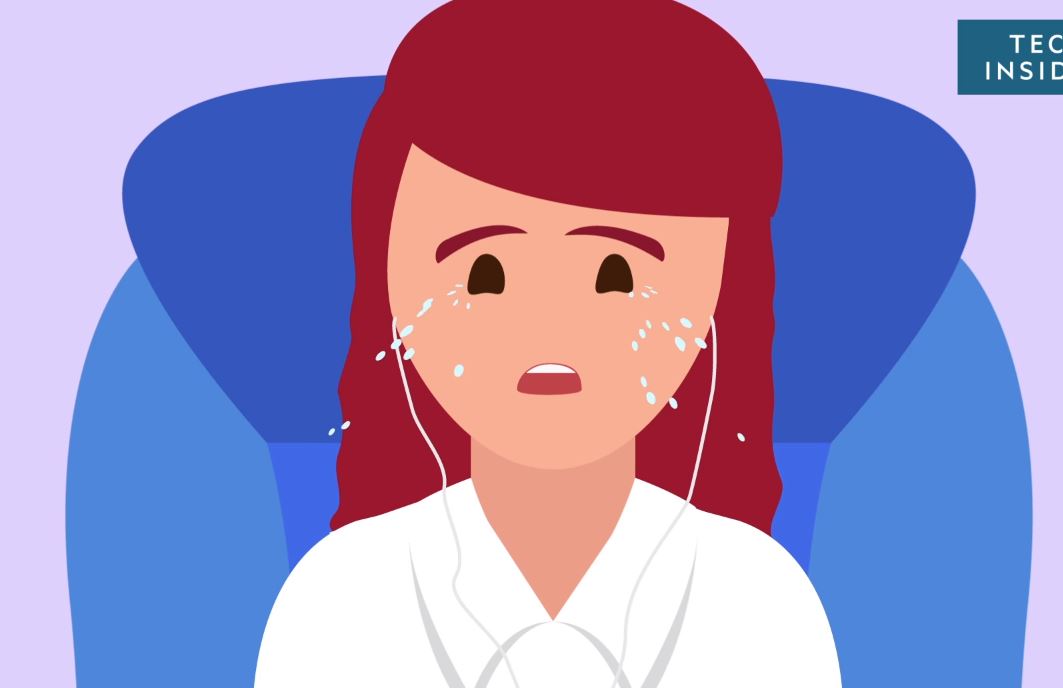Countless people – from fussy babies to Tim Burton – report feeling more emotional 35,000 feet up. Why is it so easy to cry during a flight? Tech Insider producer Abby Tang explains with the help of author Stephen Groening.
Abby Tang: I’ve cried on every plane I’ve ever been on. Countless people – from fussy babies to Tim Burton – report feeling exceptionally emotional 35,000 feet above Earth’s surface. “50 First Dates” is the same mediocre romcom in the air as it is on the ground. (Sorry, Adam Sandler…) So, why did it make me (and, admit it, probably you) blubber like a baby on a recent flight?
Crying in transit is nothing new or surprising. Bereaved people often grieve on the go. They save their sobs for the car because it gives them uninterrupted time to think and the privacy to feel. So it’s not surprising that airplanes might make us feel the same way.
Virgin Atlantic started issuing “weepy warnings” before particularly sad movies after a Facebook survey revealed people were more likely to reach for a tissue on flights. 41% of male respondents said they had “buried themselves in blankets to disguise their tears from other passengers,” and “women were more likely to pretend they had something in their eye.” And Gatwick Airport found 15% of men and 6% of women said they were more likely to cry watching a film on a flight than they would if they saw it at home.
But what actually causes people to join the Mile Cry Club? One possible explanation is altitude hypoxia – when high altitudes cause a decrease in oxygen in our blood. Diminished air pressure on flights is similar to what you’d experience at 8,000ft, which can reduce blood/oxygen levels by as much as 25%. This can cause fatigue, confusion, euphoria, inability to concentrate, and impaired decision-making. It can also mess with your ability to deal with emotion.
And the design of the in-flight entertainment system could be making your mile-high meltdowns even worse.
Inflight entertainment systems make you feel cocooned in an intimate environment.
Stephen Groening: “You’re looking at a screen that is really close to you, maybe a couple of feet, and it’s right at your eye level. So it’s almost as if you’re looking at another person in the eye for 3, 4 hours, 6 hours depending on the length of the flight. And in addition, you have these headphones and the sound, the dialogue from all these films is as if the actors are speaking directly to you, only to you in your ear – like whispering in your ear. So it creates this zone of closeness and familiarity that I think also intensifies these emotional responses.”
Abby Tang: In other words, the free headphones the flight attendant gives you before takeoff literally and emotionally connect you to the screen. There doesn’t seem to be any cure for those of us who suffer from crying while flying. Adam Sandler will always have the power to make me weep when I’m up 35,000 feet in the air.

